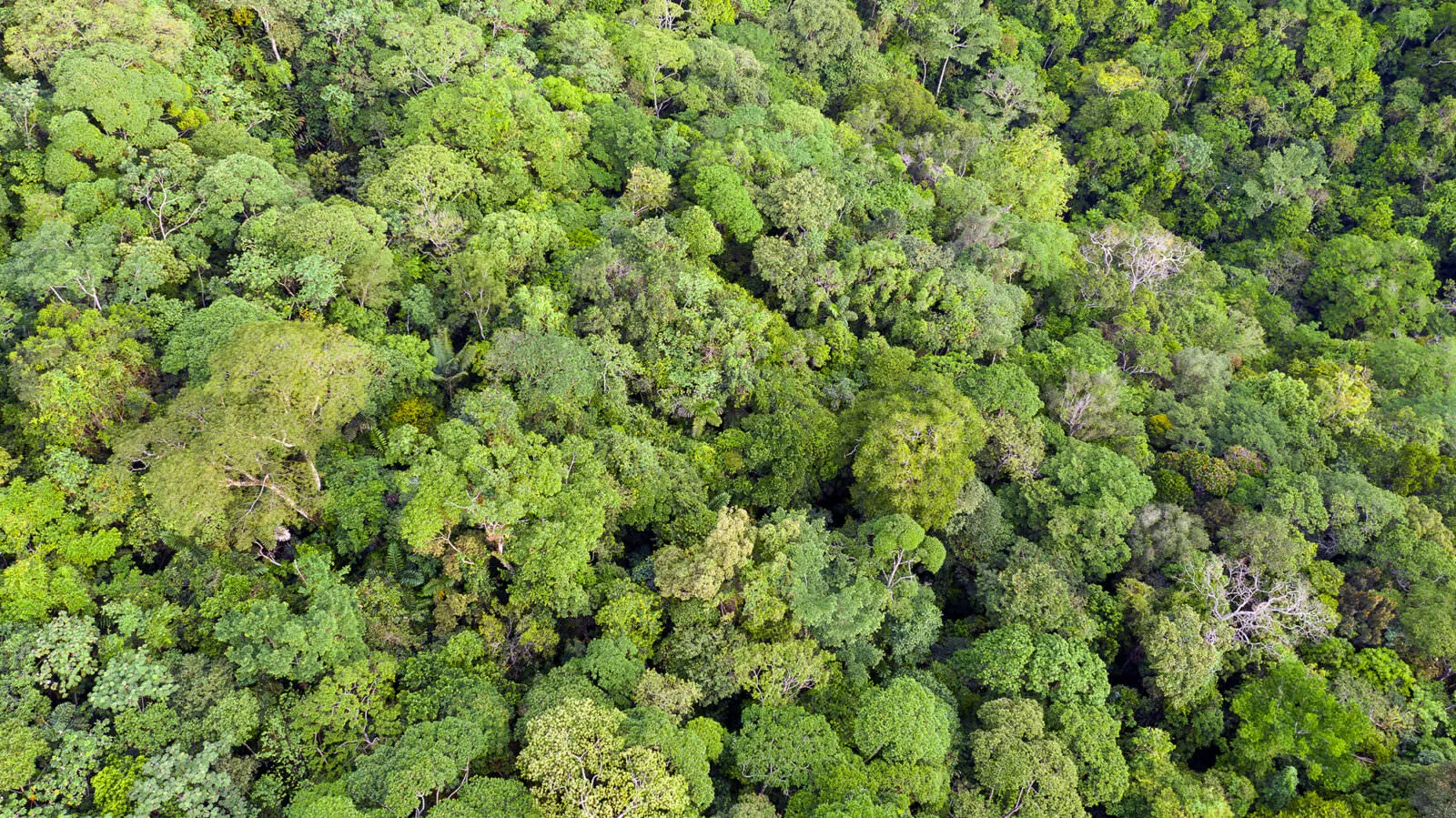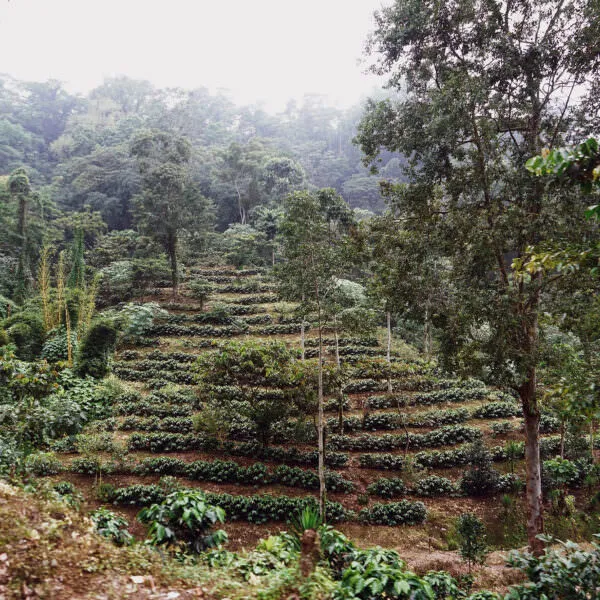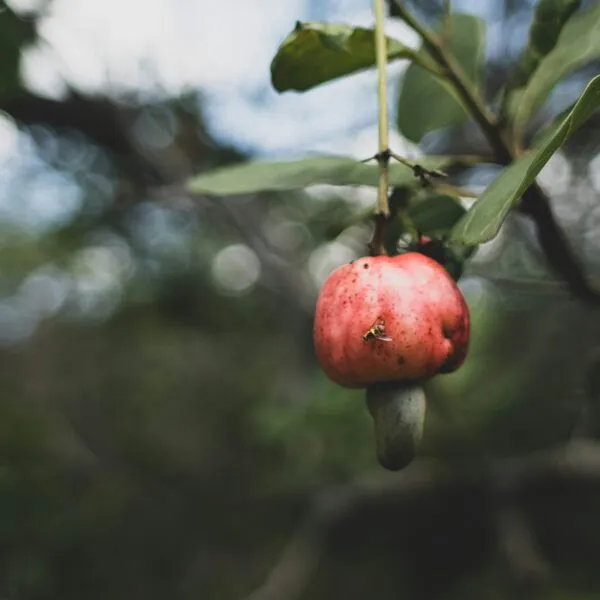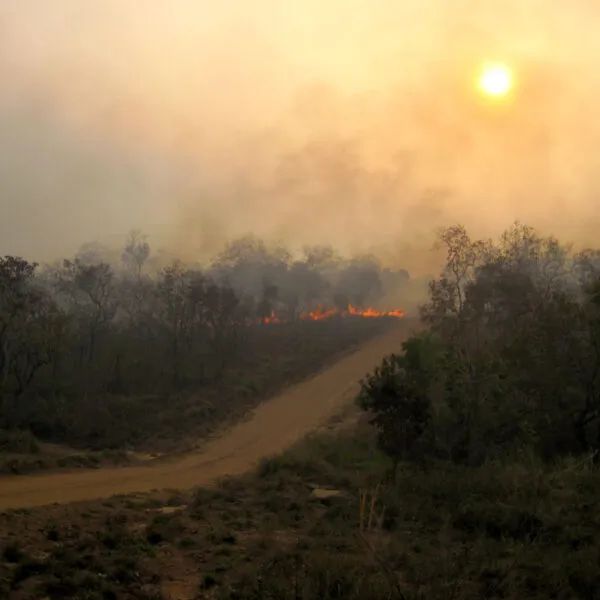Forests are life. Source of air, water, food, shelter, medicine: they are critical to the survival of every living thing on Earth. From tropical rainforests to the snowy boreal forests circling the northern hemisphere, these ecological powerhouses support the livelihoods of 1.6 billion people and host 80 percent of the world’s terrestrial biodiversity. And, as the fight to stave off climate change escalates, forests could be our most important natural climate solution.
Climate scientists agree that it is still possible to keep global warming below the critical 1.5 degree danger line—but this requires “rapid, far-reaching and unprecedented changes in all aspects of society.” This not only means slashing greenhouse gas emissions in half by 2030 but also drawing down carbon dioxide that has already been released into the atmosphere. Thankfully, nature has already invented an extremely powerful form of carbon-capture technology: trees.
Sign up for useful tips to green your life and protect our planet.
Nature’s carbon-capture technology
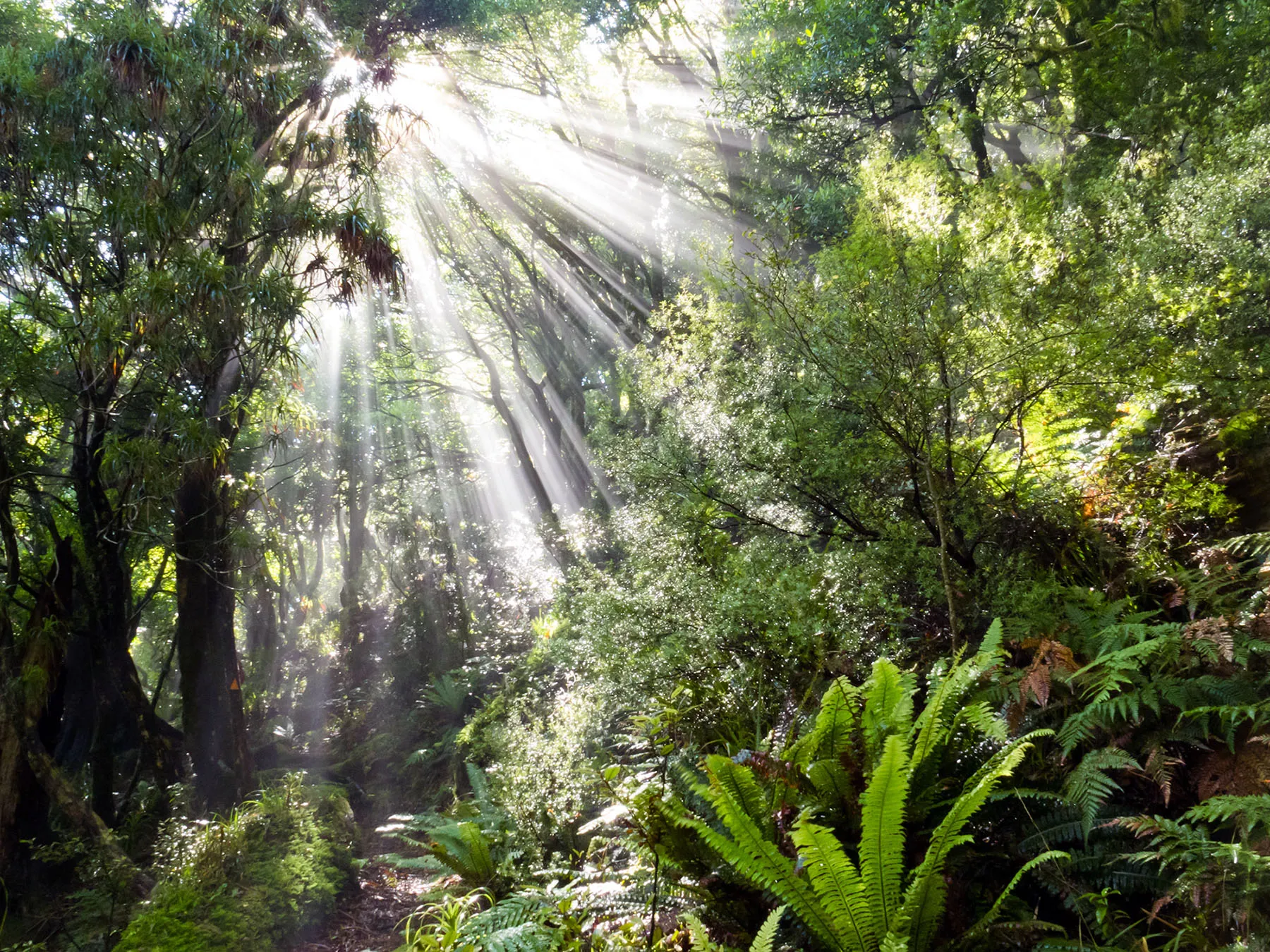
As they grow, trees absorb the carbon dioxide emissions that contribute to global warming, converting them into pure oxygen. Forests also play a critical role in cooling the planet, regulating local micro-climates by providing shade and transpiring water. All told, forests are an incredibly powerful natural climate solution, with some studies estimating that conserving forests could cut 7 billion metric tons of carbon dioxide each year—the equivalent of getting rid of every car on the planet.
Trees as rainmakers
Trees make it rain. They suck moisture out of the soil through their roots and release it into the air through their leaves—creating rainclouds and shaping global weather patterns. Scientists have observed that air that has passed over tropical forests produces twice as much rain as air that passes over less densely vegetated areas. These forests create giant “rivers in the sky” that generate rainfall hundreds to thousands of miles away. But without forests, experts warn that continental interiors would turn to desert, and streams and even huge rivers like the Nile could run dry.
And yet, global deforestation rates are still accelerating—robbing us of our best defense against climate change and causing extreme hardship for farming and forest communities around the world.
What is driving global deforestation?
According to Global Forest Watch, the tropics lost 11.1 million hectares of tree cover in 2021, including 3.75 million hectares of irreplaceable primary rainforest. This destruction not only costs us their huge carbon-storage potential, but also creates further greenhouse gas emissions, when the felled trees are burned or left to rot. The same study shows that tropical forest loss in 2021 resulted in 2.5 gigatons of carbon dioxide emissions—equivalent to the annual fossil fuel emissions of India.
The drivers are all part of a global economy built on the exploitation of natural resources: logging, mining, and land-grabbing for agricultural expansion. The last, alone, is responsible for a staggering 80 percent of tropical forest loss. From Brazil to Indonesia, big agribusiness is razing huge swathes of pristine forest to make room for lucrative animal pasture and cropland. And in doing so, slash-and-burn deforestation (the quickest way to clear forests) is setting our world ablaze triggering an ecological chain reaction of increased emissions, rising temperatures, and devastating forest fires, like those seen in the Amazon.
How the Rainforest Alliance works to protect forests
The fight to protect the world’s forests is at the very heart of the Rainforest Alliance’s mission. Together with farmers and forest communities, scientists, governments, companies, and citizens, we are working diligently in more than 60 countries to cultivate sustainable, rural economies—the most widely-proven strategy to keep our forests standing.
Here are our main approaches to conserving tropical forests around the world:
Protecting forests through regenerative agriculture
Conventional farming methods are highly intensive; they strip soils of their nutrients, steadily reducing crop productivity season after season. In desperation, subsistence farmers across the tropics—most of whom live in poverty—are then driven to clear nearby forests in search of new fertile earth. If we are to keep our forests standing, we need to help farmers break this vicious cycle by promoting growing practices that not only reduce environmental harm, but actually actively help heal the land, like regenerative agriculture.
That’s why the Rainforest Alliance focuses on key crops linked to tropical deforestation, such as coffee, tea, cocoa, and bananas. Today, more than four million farmers and farm workers are part of our globally recognized certification program; together we work to advance nature-friendly techniques (like agroforestry and organic composting) that maximize the productivity of existing farmland.
Community forestry as a conservation strategy

The best guardians of the forest are those who make their living from it. That’s why we partner with forest communities from Mesoamerica to Southeast Asia, advancing sustainable landscape strategies that support local livelihoods in harmony with the health of the forest.
While harvesting timber may not seem like a sound strategy to tackle deforestation, the conservation successes speak for themselves. One of the most inspiring examples of this is our work in the Maya Biosphere Reserve in Guatemala. Here, in an area suffering some of the highest rates of forest lost in Central America, 10 community-run forestry concessions have achieved a near zero-deforestation for 20 years. The concessions also have a drastically lower incidence of forest fires compared to neighboring protected areas. Building on this success, we have developed an Integrated Community Forest Management approach to work in other regions.
Helping forest communities build sustainable enterprises
When forests are managed responsibly, communities that live in and around them can cultivate thriving businesses out of a rich assortment of non-timber forest products: from honey to flowers and fruit. In northern Peru, we work closely with 14 Indigenous communities across the San Martín region to diversify local economies. Our teams offer business training support and together, we’re building markets for responsibly harvested forest products, including sangre de grado (“dragon’s blood”)—a form of natural latex derived from the native shiringa tree. Much of our work focuses on women’s entrepreneurship. For example, we have run digital skills training for groups like Warmi Awadora, a small women-led Indigenous handicraft collective that produces beautiful woven textiles from locally grown cotton.
Responsible business from forest to shelf
At the Rainforest Alliance, we think of ourselves as a critical friend to companies that, like us, want to make responsible business the new normal. We provide expert advice to these companies on how to source raw materials (such as cocoa, coffee, and oil palm) more sustainably and work with them on their sustainability journey to eliminate deforestation and human rights abuses from their supply chains—all the way from forest to the supermarket shelf.
In June 2019, we co-launched the Accountability Framework Initiative (AFi) together with a coalition of 14 other environmental and social NGOs. The AFi aligns a wide range of existing monitoring tools and standards—such as certification—and provides companies with a clear and harmonized approach to measuring and meeting their sustainability commitments.
Influencing policy to support healthy forests
With more than 30 years of experience in fighting deforestation, the Rainforest Alliance is uniquely positioned to advise governments and companies on how to implement meaningful change in support of healthy forests. Our advocacy team works at both the regional and national levels to shape more responsible corporate policies and encourage far-reaching legislative action globally.
Focusing on complex issues, such as deforestation and gender equality—which require a sector-wide approach—we support local and regional NGOs in their efforts to lobby local decision makers and business leaders. With our support, for example, the Kalimajari Foundation in Indonesia is transforming local cocoa supply chains for the better—training farmers in sustainable growing practices and ensuring that there is a reliable market for their crops. Kalimajari’s model for quality cocoa has now even been adopted by the Indonesian government.
From forest conservation to reforestation
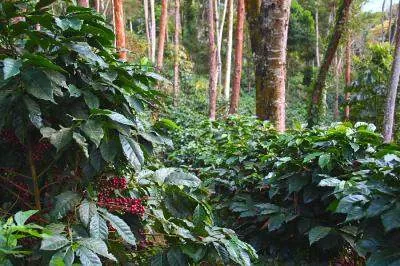
One natural climate solution that can and should be used in conjunction with strong initiatives to stop deforestation is large-scale reforestation. That’s why we approach sustainability as a journey, providing farmers with a roadmap from conservation to restoration. Planting new trees is a win-win for nature and farmers alike. Growing shade-loving crops (such as coffee and cocoa) alongside trees—a practice called agroforestry—helps regulate temperature and humidity levels, while also enriching soils. And if fruit-bearing shade trees are planted, farmers can also gain a valuable extra source of income.
In West Java, agroforestry has helped coffee-growing communities recover from tragedy. When deforestation led to a deadly landslide back in 2004, eight farmers were inspired to reforest; and so together they founded the award-winning Klasik Beans cooperative. A decade later, the cooperative has grown to 516 members and plants sixteen different varieties of shade trees over 548 hectares of farmland. As one farmer, Rony Syahroni, explains “We don’t plant coffee in the forest—we design our farms to become forests.”
